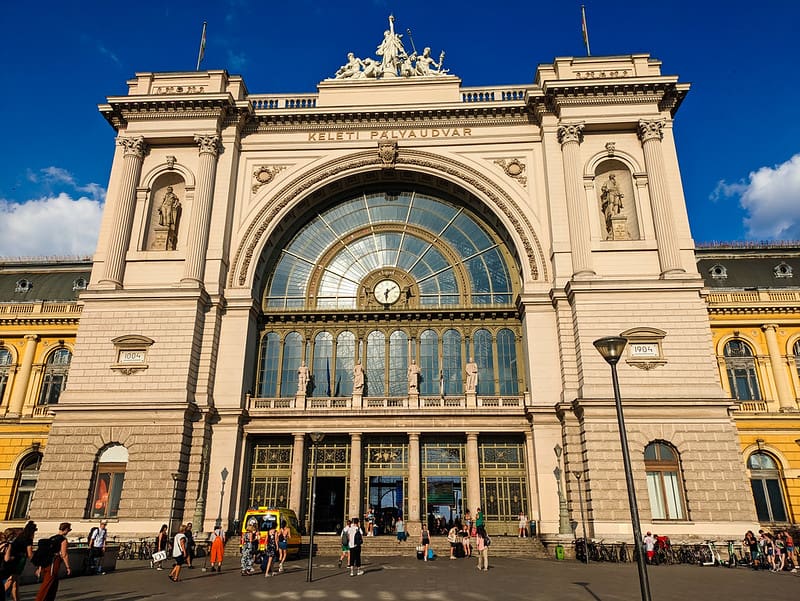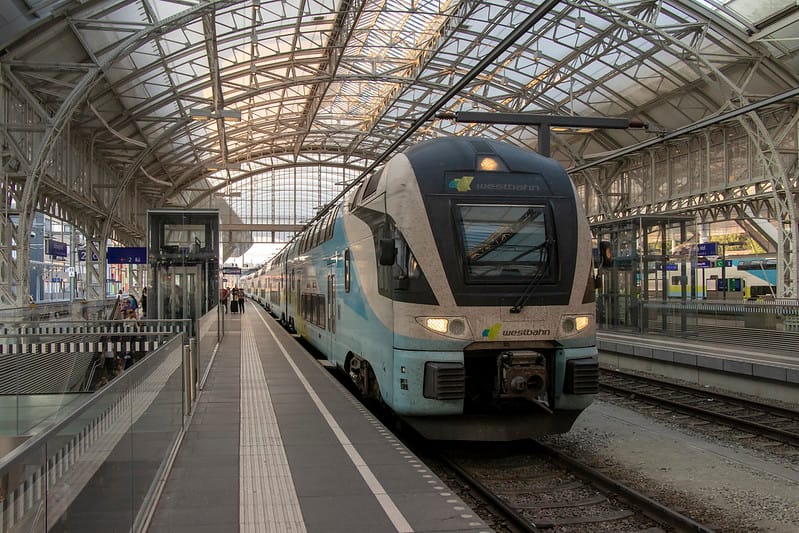
When most people think of Europe, the first places that come to mind are usually Prague and Budapest. However, there is so much more to discover beyond these well-trodden cities.
Ease into the healing waters of Europe’s largest medicinal baths, soaking in the ornate architecture and relaxing in the saunas, steam rooms, and 18 indoor and outdoor pools fed by hot springs. Afterward, grab a plate of goulash and enjoy some local beer with your group!
1. Budapest
Trains from Budapest to Bucharest are incredibly comfortable and cheap. With plenty of carriages and seat and berth options available, you’re sure to find something that suits your budget. Ticket prices range from dirt-cheap tags for basic passenger trains to super comfy overnight sleeper berths on luxury trains. Some fares also include 2 or 3 bags per person – super convenient!
Most of the time, train tickets are valid for one year from the date of purchase. This means that you can use them again for another trip, provided you have enough time to complete your journey. Moreover, train travel is one of the most environmentally friendly modes of transport around. If you’re planning to take the train from Budapest to Bucharest, then it’s important to book your ticket well in advance. This will ensure that you have a seat or berth and that the prices don’t increase too much for your chosen dates.
You can find a wide variety of train ticket prices for the Bucharest-Budapest route, with some tickets as low as EUR35 for a 2nd class seat or EUR50 for a bed in a couchette compartment. The cheapest tickets are normally available for booking 6 months in advance, so it’s best to plan your trip accordingly.
The journey takes about 14 hours and 50 minutes. It’s a great option for travellers looking for an easy and safe way to get from Budapest to Bucharest, without needing to worry about driving or crossing the border.
Once you’ve arrived at the station, you can easily get to the rest of the city on public transit or with a taxi. Keleti Train Station is located in the heart of downtown, so it’s not far from many popular attractions.
There’s a lot to see and do in the beautiful city of Budapest, often referred to as the Paris of Eastern Europe. It’s home to tons of awesome things to do, mesmerizing sights and attractions, plenty of restaurants and cafes, and a rich historical legacy. Here are some suggested itineraries for your trip to this magical city!
2. Transylvania
Taking the night train from Budapest to Transylvania sounds like a setting for something that could go very wrong, but in fact it’s an exhilarating way to see this beguiling region. Departing at 11:30 at night, the journey to Sighisoara is not crowded and it’s easy to find seats in this comfortable train.
The journey through Transylvania takes you through fairly distinct “mini-regions” in terms of culture and history. Brasov and its surrounding area has a significant ethnic German minority, mountain resorts and medieval towns like the citadel at Sighisoara – which was the inspiration for Vlad Tepes, better known as Dracula. This is followed by the coffee culture, street theatre and cosmopolitan society of Sibiu – European Capital of Culture 2007, and then the heart of Transylvania itself, Cluj-Napoca – which is the largest city in this fascinating part of Romania.
As you travel towards the Carpathian Mountains and beyond, the train’s route takes you past evocative Saxon villages like Viscri with its fine examples of Saxon town planning, where there is still a small population of ethnic Hungarians (the locals are called Szek). Then it’s on to the famous castle at Bran, which is more than just a dark fairy tale. This is a must-see attraction on any trip to Transylvania.
Other highlights include visiting the UNESCO World Heritage-listed medieval town of Brasov, discovering the fortified walls and cobblestone streets of Sighisoara, and learning more about Dracula’s legacy with a tour guide in Bucharest. You can also discover the tumultuous history of the Balkans with an included guided visit to Belgrade and the Tsarevets Fortress, or delve into Bulgaria’s intriguing past with a local expert in Veliko Tarnovo.
Getting around Eastern Europe by train is very straightforward, as the distances between cities are not huge and public transport is cheap and reliable. This makes it a great choice for families with children who want to explore without having to worry about the safety of navigating busy cities. This is one of the reasons why this particular itinerary features so many train-based trips.
3. Rapa Rosie
Located in the Apuseni Mountains, Rapa Rosie is a geological formation that is an incredibly striking sight to behold. It is made up of a series of red-colored rocks that are shaped into pyramids, towers, and columns, and it provides an incredible contrast to the surrounding greenery and mountain scenery. The best time of year to visit this natural wonder is during late April or early May when visitors will be able to witness the stunning collection of flowers that bloom around the rock formation. Guided tours are recommended for those looking to experience this remarkable site safely and without the need to worry about getting lost along the way.
The best way to get to Rapa Rosie is by car, which allows travelers to enjoy breathtaking views of the surrounding landscape as they drive. Visitors can also opt to take a train or bus to reach the area, though these options provide less convenience than driving and may require additional stops along the way.
Rapa Rosie is known for its unique look, which was formed through erosion by running water. The formation stretches over a length of 800 meters and reaches heights between 50 to 125 meters. The resulting peaks have the appearance of a ruined ancestral monument, and they have attracted the attention of many scientists and archaeologists who have found remnants of Cotofeni lifestyles within the area.
The ideal time to visit Rapa Rosie is in the spring, when the grass and flowers are full of color and offer a striking contrast to the red-colored rocks. It is also a good time to see the Peonies, as they only flower for about one month of the year – from late April until the beginning of May.
Visitors can reach Rapa Rosie by reserving a spot on an organized tour that includes a stay in Budapest. Alternatively, they can book an inclusive adventure with Emerald Cruises that features a seven-night cruise aboard a luxury ship and touring in the cities of Belgrade, Serbia, Sofia, Bulgaria, and Romania. The package includes a hotel stay, guided tours of the key sights, and listening devices for shore excursions.
4. Heart of Jesus Statue
When you think of Eastern Europe, chances are that the first few places that come to mind are Prague, Budapest and maybe Warsaw or Krakow. While these are certainly worth visiting, there is much more to explore in this fascinating region. The Heart of Jesus Statue, located near Sinaia in Romania is a must-see attraction that carries a unique religious significance. The statue stands at over 14 meters tall and can be reached by climbing a series of stairs. Once at the top, visitors are rewarded with stunning views of the surrounding countryside. The statue is a popular destination for religious pilgrims as well as tourists who are fascinated by the beauty of this region.
Like Rio de Janeiro’s giant Christ the Redeemer, the Heart of Jesus is a massive metal statue that serves as both a lookout point and a religious symbol. The sculpture was erected in 2011 in Harghita County, Transylvania and is the highest statue of its kind in the country. The statue is built from stainless steel and the sculptors have incorporated their deep understanding of faith and superb artistic skills into its design.
The statue is the brainchild of a local milk factory owner who wanted to leave something lasting behind in his village. The locals are happy to welcome tourists and have embraced the statue as an important tourist attraction. The structure is also meant to serve as a reminder of the power of the human spirit and to celebrate life’s many blessings.
While it might not be as famous as other iconic landmarks in the world, the statue has become a symbol of Transylvanian heritage and culture. It is a testament to the power of faith and the importance of unity in the community.
In addition to being a beautiful sight, the statue is also a popular place for locals to meditate and spend some time with their family. The views of the mountains and countryside are breathtaking, making it an ideal spot for those who want to relax and unwind.
If you’re looking for a great way to see the best of Eastern Europe, consider booking a tour with Travelmarvel. We offer a number of affordable tours that include trips to these amazing destinations.

